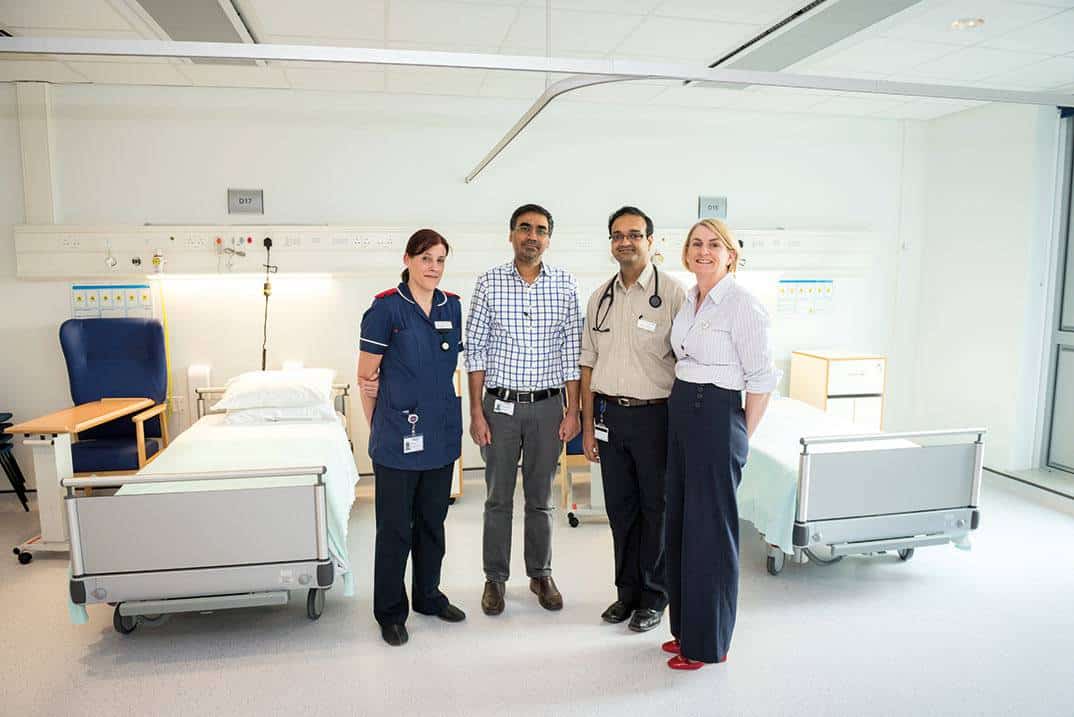Staff at Tunbridge Wells Hospital are hoping that a new 38-bed ward will help them in the fight to cope with an ‘unprecedented’ demand on services with close to 100 per cent bed occupancy.
Some reports suggest that an 85 per cent occupancy is the maxim level considered to be safe.
The £3.3million ward opened this week and will provide care for short stay and ambulatory patients – those who are not bedridden and need treatment typically lasting a few hours, such as blood and iron transfusions. Patients will not be expected to stay overnight
Earlier this month the Times highlighted the fact that the Pembury hospital has been forced to cancel 400 operations since the start of the year.
A trust spokesperson said yesterday (Tuesday): “We, along with most other trusts are operating at 95 – 98% occupancy the majority of the time with demand for beds often exceeding our capacity. We manage the situation through our escalation policy and by opening additional beds when possible.
“The NHS as a whole is currently facing unprecedented demand for services and we are regularly seeing many acutely unwell patients. We anticipate that the new 38 bed ward should help to ease the pressure over the next few weeks.”
The idea of the ward is to ensure patients can get home more quickly rather than taking up bed space meant for longer term stays.
There are 56 nurses assigned to the ward in a 24 hour period. They are overseen by ward manager Emma Elias, who completed her nursing training at the old Pembury Hospital.
She said: “A lot of procedures do not need to result in overnight stays and this will help change the mind-set of people so they no longer feel they need to be here for days to get the right treatment.
“Things like infusions previously required in-patient beds before wards like this.”
Dr Agarwal Gaurav is one of three consultants assigned to the ward, along with one middle-grade doctor and five junior doctors.
He said: “This is the best way to use the resources we have in the most efficient manner. It is beneficial for the patients, as many do not want to be in hospital all night.
“This way, they can take their antibiotics in the morning, go to work and come back in the evening and still have a full day.
“Patients deteriorate if they just lie in bed, especially the elderly.”
As well as doctors and nurses a host of support staff, such a physiotherapists and porters, will be available to ensure it all runs smoothly.
The layout marks a departure from the hospital’s previous practice, when it became the first hospital of its kind to consist entirely of single-bed rooms when it opened four years ago.
Instead, there are around four beds or trolleys per room, depending on how long each patient is expected to stay. The short-term nature of the ward means individual rooms would be inefficient.
Each room is colour coded, to help dementia patients recognise where they are.
Planning for the ward began in March last year, with building work starting in August.
Its development was overseen by Chief Operating Officer Angela Gallagher, who said an entire floor of offices was gutted to make way for the ward, with previous administration staff now occupying multiple sites around the hospital.
“We have been extremely economic on space considering we moved 380 people from the floor, but it will provide a massive relief for day-to-day patient capacity.”








